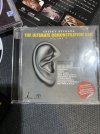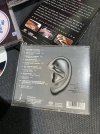STC
Active Member
Post in thread 'Properties of speakers that creates a large and precise soundstage'
https://audiosciencereview.com/foru...rge-and-precise-soundstage.48542/post-1745379
@Bugal1998
I started a new topic to discuss just this particular track perception. The more inputs the better we can understand our system and our perceptions.
Okay, I listened to the track again and I still don’t think you hear them inside the head. The system is with XTC and therefore it should give the 180 degrees perceptive correctly. Although, the narration in the track would have affected our judgment as you are already expecting where the sound should come from but I still don’t get inside the head.
This is the binaural recording of the playback from the 2 speakers only. Please headphones so you get the general impression and tell me exactly where you felt the sound to be inside the head.
[ Note: Eventhough this is a binaural capture of the system playback, there won’t be much externalization and you may feel all the sound is inside the head but just see if you can feel the extreme difference. Thanx]
 1drv.ms
1drv.ms
https://audiosciencereview.com/foru...rge-and-precise-soundstage.48542/post-1745379
@Bugal1998
I started a new topic to discuss just this particular track perception. The more inputs the better we can understand our system and our perceptions.
Okay, I listened to the track again and I still don’t think you hear them inside the head. The system is with XTC and therefore it should give the 180 degrees perceptive correctly. Although, the narration in the track would have affected our judgment as you are already expecting where the sound should come from but I still don’t get inside the head.
This is the binaural recording of the playback from the 2 speakers only. Please headphones so you get the general impression and tell me exactly where you felt the sound to be inside the head.
[ Note: Eventhough this is a binaural capture of the system playback, there won’t be much externalization and you may feel all the sound is inside the head but just see if you can feel the extreme difference. Thanx]


